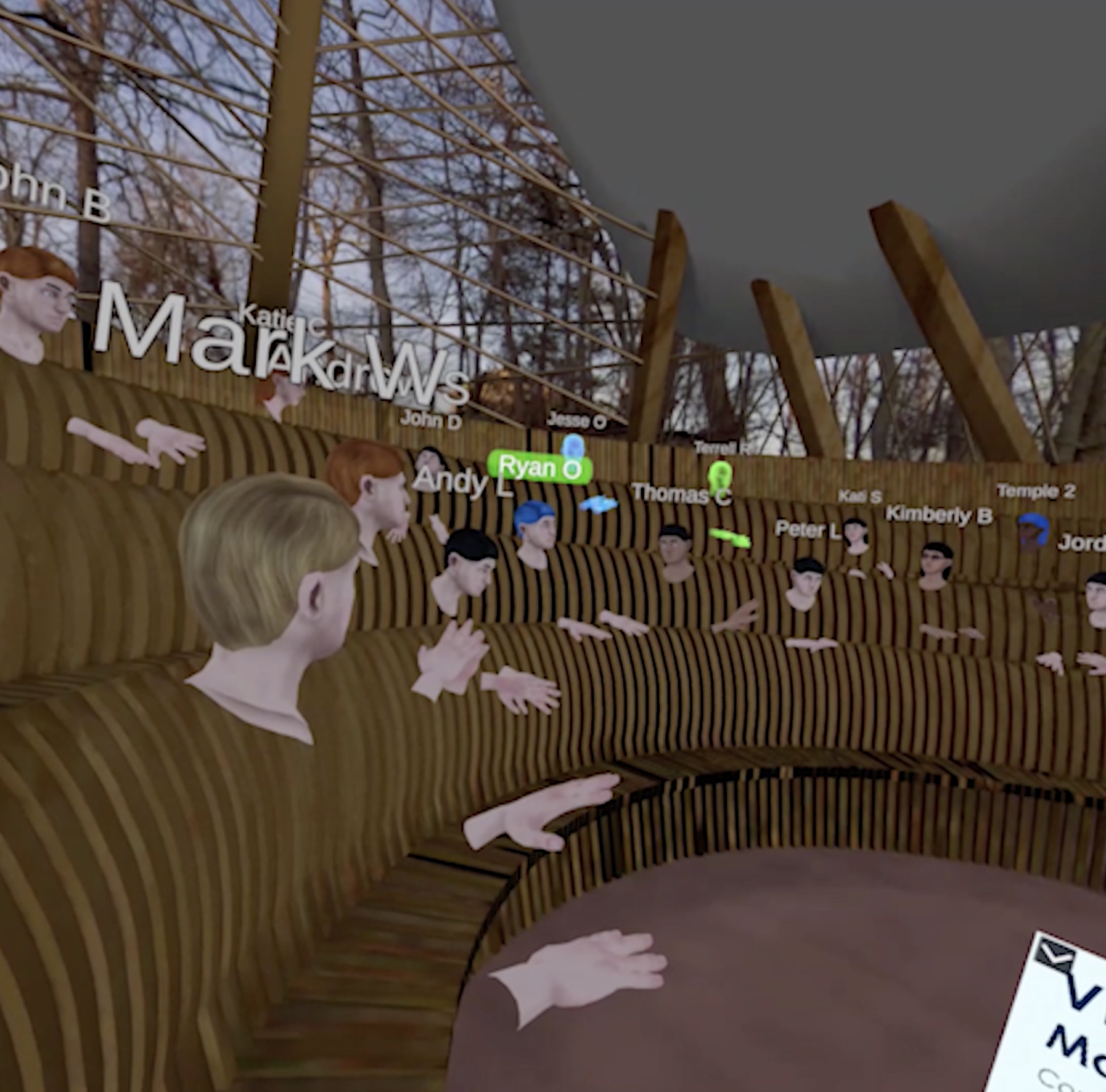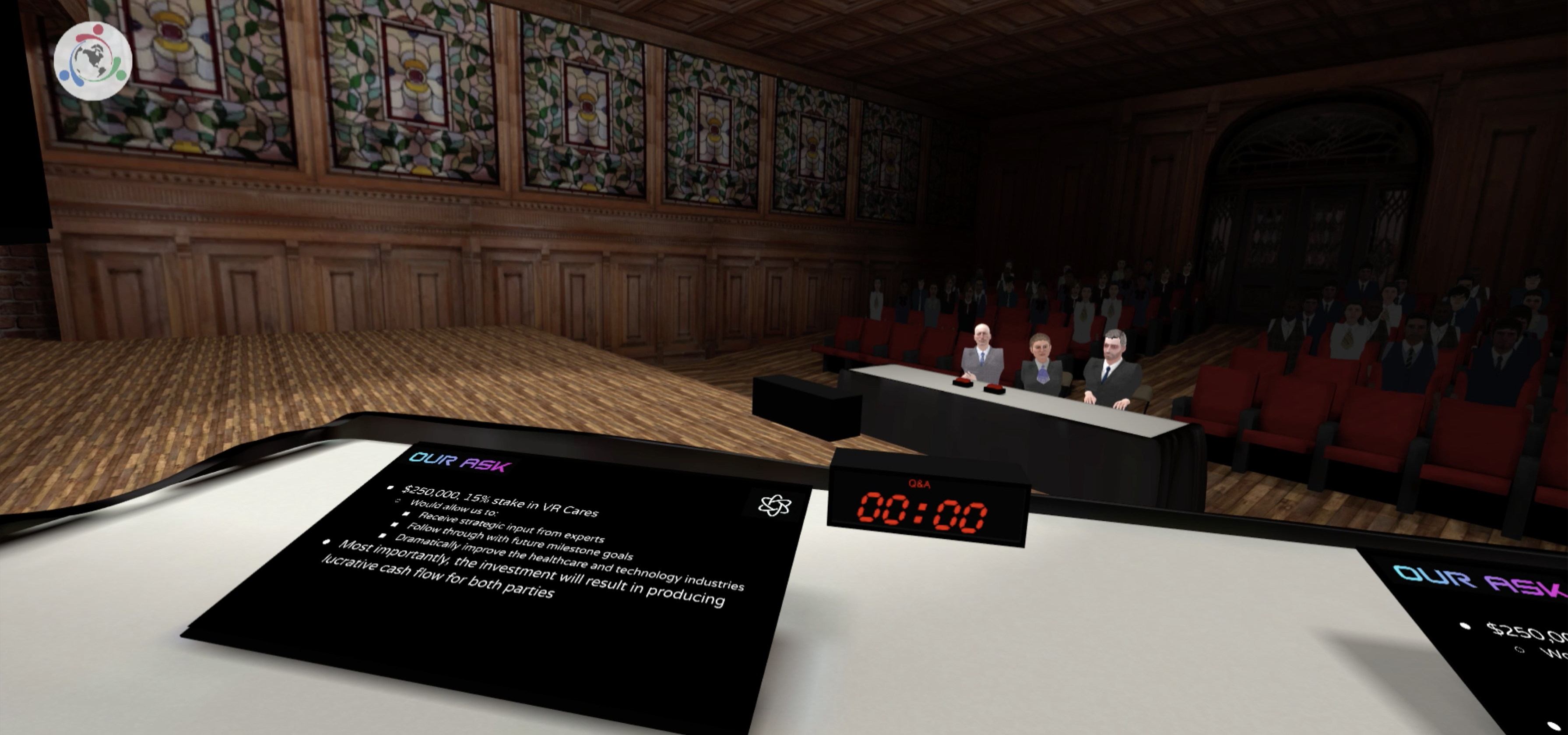During the start of the pandemic, a college student wearing a virtual reality headset at home sat safely in a virtual classroom filled with her classmates who took the form of digital avatars. Meanwhile, a live stream lecture with the professor played in front of everyone. At one point, the professor asked a question, and the student looked down at the virtual monitor on the digital monitor in front of her, which held PDFs she had uploaded to the program for notes. When ready, she raised her hand in real life. Doing this made her avatar raise its virtual hand in the digital environment, which the professor noticed and called her by name since it floated above her.
“It was during our first VR class,” recalls Borz Ozkan, the professor and academic director of online MBA and BBA at Temple University’s Fox School of Business. “One of my students, whose avatar was sitting in the back of the room, started talking, and almost immediately cried out, ‘Oh my God, everyone is looking at me!’ All of the avatars had turned around to look at her as soon as she started talking.”
This business class was the end result of an 18-month project to help further engage online students using VR technology. Temple supplied Oculus Rift headsets to students and built virtual environments that replicated two actual lecture halls at the Pennsylvania university with the Glimpse Group, an AR and VR platform company that provided the software and hosted the six live classroom sessions.
“One of the best features of the VR technology is that it has surround sound,” says Ozkan. “When somebody’s avatar in a virtual room is sitting behind you and speaks, you can actually hear the sound coming from behind you, so you will naturally turn around to look in the direction of the sound. And the person who is speaking can see you turn towards them.”
Switching from live stream lectures to an avatar
Temple University launched the online business course right before the coronavirus began affecting schools across the U.S. Originally, the student digital avatars took up 180 degrees of the virtual environment while the other 180-degree area contained Borz Ozkan’s live stream lectures, which he recorded from the university studio before the lockdown. When the lockdown went into effect, he and his team acquired a permit to move the equipment and live stream from an empty house, which had an unstable internet connection. “After the third week, the university didn’t want my team to gather together to film every live stream lecture, so they made an avatar for me starting on week three of the course,” says Ozkan.
Related: Three key questions to ask before implementing virtual reality tech in the classroom
Related: Future Shock: It’s time to hit the reset button
Related: Army-backed drone project shifts to virtual reality at Wichita State
Students appreciated both versions. Unlike the avatar, the live stream lecture allowed students to see Ozkan’s facial expressions, which improved engagement. Meanwhile, live streaming created a two-second delay between Ozkan and his class, so switching to an avatar improved classroom discussion.
Preparing for a VR class
Before the VR course launched, Temple staff helped students prepare by uploading how-to documents into the university LMS and having students schedule one-on-one meetings with tech support to prove they knew how to use the VR technology.
Before every class, students watched interviews and meetings at digital disruption startups, which staff recorded using 360-degree cameras. “Students would watch these videos before every class but also to see what it would be like to sit in the middle of actual meetings at startups,” says Ozkan.
Students gathered in the virtual lecture hall for no longer than one hour since wearing headsets for extended periods of time can overtire students while causing headaches and dizziness. Students then broke out into separate groups on Zoom, though these smaller meet-ups could take place in separate VR environments in future reiterations of the class. Temple might also add a way for students to take notes in each VR class, based on student feedback.
 “The biggest plus about VR is that students have zero distractions, especially their phones, since they are wearing headsets,” says Okan. “If a student takes off their headset to look at their phone, for example, their avatar’s head will fall down.”
“The biggest plus about VR is that students have zero distractions, especially their phones, since they are wearing headsets,” says Okan. “If a student takes off their headset to look at their phone, for example, their avatar’s head will fall down.”
He adds, “When someone is speaking on video conferencing platforms, everyone usually looks at the image of the person who is talking on the monitor and not the camera, so, for the person who’s speaking, it’s hard to tell if anyone is paying attention to them. But on VR, you feel like you’re on stage, and that makes a difference.”
For more coronavirus coverage, click here.








